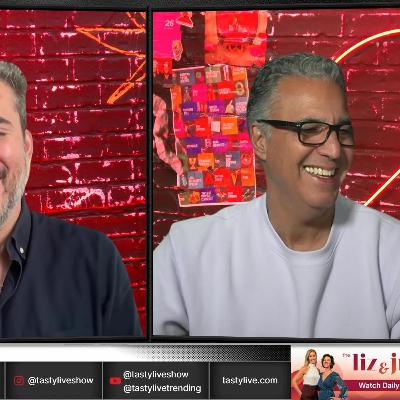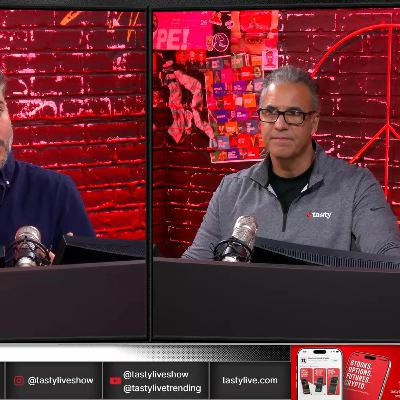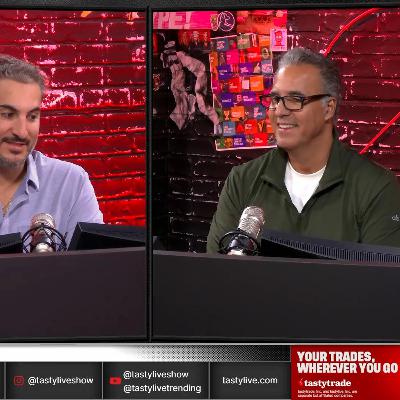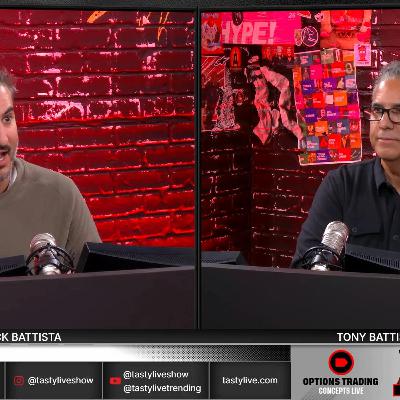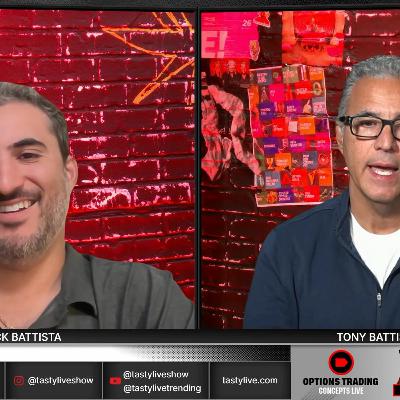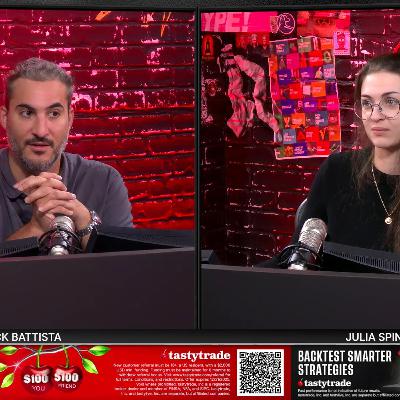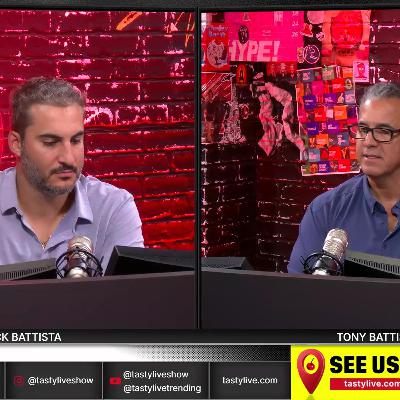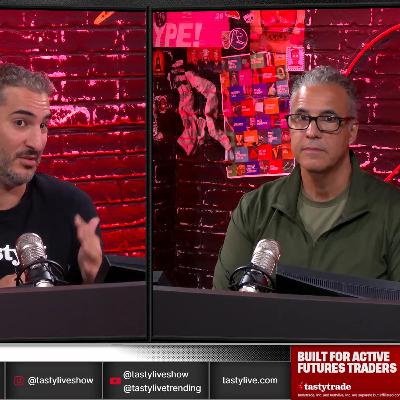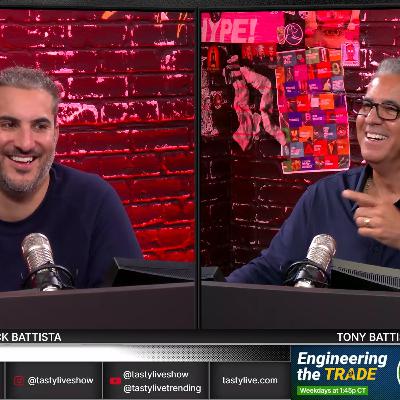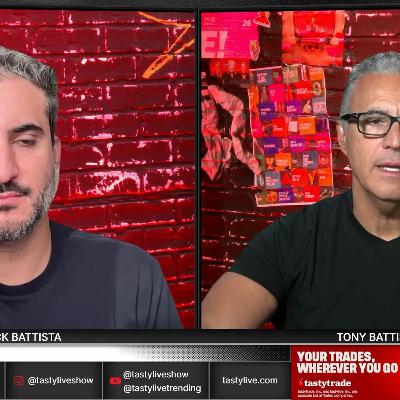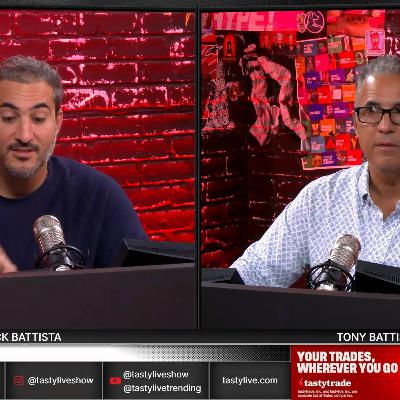Discover tastylive: Confirm and Send
tastylive: Confirm and Send

tastylive: Confirm and Send
Author: tastylive
Subscribed: 48Played: 3,343Subscribe
Share
© ℗ & © copyright 2013 - 2025 tastylive. All Rights Reserved.
Description
Kickstart the day with Nick and Tony Battista as they answer viewer emails they received the previous day on options, stocks, futures, and general trading strategies.
2475 Episodes
Reverse
The market trended lower with all four major indices down approximately one-third of a percent. Russell 2000 (/RTY) showed the most weakness while the Dow has demonstrated relative strength recently as NASDAQ sells off. Volatility edged up slightly to 19.52.
Gold continued its impressive run, climbing $20 to around $42, extending its rally from below $4,000. Silver also showed strength, prompting some profitable scalp trades. Oil gained 58 cents to $59.06, while Bitcoin rose nearly 1% to $102.
Earnings reactions included Cisco up 5, Disney down 4, and JD.com up about 50 cents. The hosts discussed VIX options strategies, advising against naked call selling due to volatility expansion risk and recommending defined risk positions instead.
The discussion highlights current market activity, noting the S&P 500's recent rise, with the Dow reaching all-time highs. Volatility is contracting, while Bitcoin (BTC) and Ethereum (ETH) see upward movement. The hosts tackle questions about trading strategies in IRA versus margin accounts, emphasizing the importance of managing risk and using options for leverage. They also explore advice for beginner investors, suggesting the use of synthetic strategies over direct stock purchases to maximize capital efficiency.
E-mini S&Ps down 17.5 points after Monday's strong performance, while NASDAQ fell 125 points. Gold continues momentum with a 1% gain, up $28.50, while silver surged over 6-7% recently, trading near $51. Bitcoin retreated to $104,700 after nearly reaching $108,000 overnight. Oil gained 63 cents (1%) to $60.76.
During Confirm and Send, Nick and Tony addressed several viewer questions including trade adjustment strategies. They generally avoid converting undefined risk trades to defined risk positions mid-trade, noting defensive adjustments are typically made from losing positions.
Regarding bond pricing relationships, it's mentioned the "three tick rule" where approximately three ticks equals a 0.01 change in interest rate yield, with 25 basis points equaling one full point in the futures contract.
It is also emphasized that most trades initially showing losses is normal, as market efficiency means fills typically come when positions are slightly unfavorable initially.
Market opens strongly with E-mini S&Ps up 62 handles (1%), NASDAQ up 1.5%, and Russell up 1.25%. VIX collapsed below 19, confirming the upward move. Bitcoin rebounded to $106,800 after trading below $100,000 last week.
The segment addressed carrying costs across financial instruments, noting they're built into pricing for futures, options, and physical assets. Regarding tail risk protection, hosts emphasized position sizing as the primary defense, suggesting defined-risk trades as alternatives.
For multi-leg option strategies like iron condors, they recommended wider spreads rather than tight spreads, which require holding closer to expiration for profitability. On technical indicators, the hosts questioned the practical trading value of 50/200-day moving averages despite their contextual relevance.
The discussion begins with a review of market conditions, noting declines in major indices, including the NASDAQ and E-mini S&Ps. Nick and Tony then explore trading strategies, particularly for earnings season, suggesting a cautious approach to zero-day SPX trades amid heightened volatility. They emphasize the importance of managing buying power and advocate for scalping with futures over stocks due to better risk management. Key recommendations include building a watch list and participating in market trades to develop awareness, all while focusing on options strategies for potential gains.


